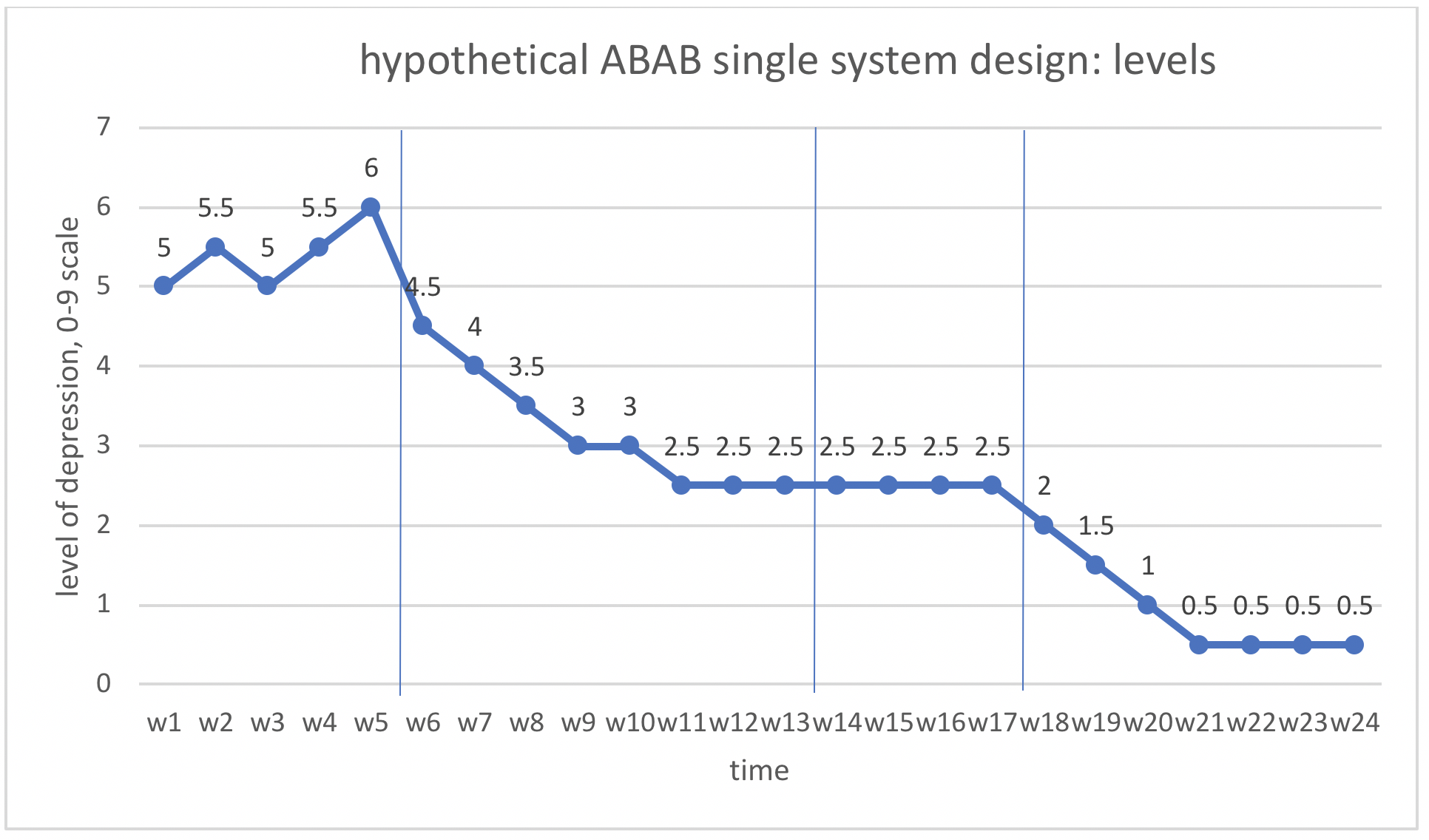Module 5 Course Conclusions
Let’s review the major topics covered in this second in the 2-course sequence:
- Research and Statistics for Understanding Diverse Populations and Social Work Problems, and
- Research and Statistics for Understanding Social Work Interventions.
Overall: Embracing Evidence-informed Social Work.
An article by Ferguson (2017) described reflective practice as an ideal and core concept across professions, represented by practitioners thinking about what they are doing while they are doing it, and subsequently thinking about what occurred and how their practice linked to knowledge. The concept of engaging in evidence-informed practice presented throughout this two-course sequence is based on the premise that research and statistics evidence are used to inform and evaluate practice.
Corey Powell (2011) observed that inquisitive souls exist in our world, individuals with “a ready curiosity, a desire to gather empirical evidence, a willingness to get dirty in order to put a theory to the test.” These individuals have the right instincts for science, he says, and are identifiable through their reactions to a “Wet Paint” sign: they have the impulse to check if the paint really is wet. Ideally, our coursework has stimulated or reinforced your curiosity and enthusiasm for critically thinking about evidence. Remaining curious, asking questions, and locating and evaluating evidence are important qualities for social work professionals.

Module 1. Introduction and Context of Social Work Intervention Research.
The first module in our second course began by drawing connections between the topics of the first course, Research and Statistics for Understanding Diverse Populations and Social Work Problems, and our second course, Research and Statistics for Understanding Social Work Interventions. The key point was that the skills and knowledge learned in our first course all apply to the skills and knowledge developed in our second course. What we understand about the people we serve, the social problems we address, and the social phenomena involved are all critical underpinnings to the interventions we apply. Next, Module 1 explained what is meant by “social work intervention” at multiple levels in complex, dynamic biopsychosocial systems. The relationships between evidence and intervention were demonstrated: evidence informs intervention and evidence is used to evaluate (and improve) interventions. You learned to distinguish between evidence-informed practice, evidence-based practices (EBPs), and the evidence-based practice (EBP) process.
Next, Module 1 reviewed the types of questions asked in evaluating practice. Flowing from the research questions, you learned about different formats or approaches to evaluating practice: needs assessment, outcome evaluation (for practice, programs, and policy), process evaluation, and cost-effectiveness evaluation. Finally, Module 1 identified and explored ethical concerns that commonly arise in intervention research—not only do general professional ethics and research ethics concerns apply, there are several that arise in the specific context of intervention research. These related to issues of consent to participate, relationships between research and intervention activities, designing studies with control groups, and what happens to participants when the research phase ends.
Module 2. Identifying and Using Evidence to Inform All Levels of Social Work Practice.
This second course module specified 6 steps involved when social workers engage in the evidence-based practice (EBP) process: specify the practice question, identify best evidence, critically appraise the evidence, integrate evidence with practice expertise and client preferences/circumstances, take appropriate action, monitor and evaluate outcomes and process. You learned specific skills related to each of these steps, beginning with use of the COPES (and PICO) framework for formulating practice questions. You learned about the important role of logic models and the role of theory to intervention planning, and what evidence about mediators mean in applying theory to intervention planning (or evaluation). An entire chapter extended what you learned in the first course about locating evidence in the literature and emphasized the value of systematic, scoping, and meta-analytic reviews for practitioners. The next chapter provided direction in terms of what to look for when reviewing research reports about interventions, including information about assessing appropriateness to the practice decision at hand, and concluded with a transition to implementing, monitoring, and evaluating the intervention plan. The process was demonstrated through an example addressing high school dropout/retention rates.

Module 3. Social Work Intervention Research Designs and Methods.
In both courses, the third module was about research approaches and study design. In this course, you learned that intervention and evaluation research is conducted through qualitative, quantitative, and mixed methods approaches depending on the nature of the research or evaluation questions: formative, process, intervention fidelity, outcome/impact, or cost evaluation. Because intervention and evaluation questions typically involve indicators of change, longitudinal designs are commonly preferred over cross-sectional designs. The remainder of the first chapter in Module 3 discussed various strategies for data gathering: naturalistic observation, participatory observation, participatory action research, and community-based participatory research (CBPR). This conversation continued in Chapter 3 which addressed various sources of data, including administrative data, secondary data, and primary data collection efforts. In addition, you learned in this module about measurement issues related to different variable types and a study’s unit of analysis. Challenges associated with measurement in intervention and evaluation research included validity and reliability for measuring change, measurement sensitivity and specificity of clinical tools used in intervention and evaluation research, and concerns about clinical versus statistical significance in results.
Quantitative designs were presented in terms of capacity for preserving internal validity with the least control attributed to pre-experimental designs, more control quasi-experimental designs, and the greatest control with experimental designs. Using Xs and Os, as well as Rs, As and Bs, you were presented with 10 commonly employed intervention and evaluation research design options. Each was presented with an example and discussion of its advantages and disadvantages. The module concluded with a discussion of participant recruitment, retention, and sampling issues involved with intervention and evaluation research.

Module 4. Understanding Basic Inferential Statistics Used in Social Work Intervention Research.
Our fourth module built on what was learned in the fourth module of our first course—statistical analyses. Intervention research often involves univariate descriptive, bivariate, and hypothesis testing (inferential) statistics. We revisited the univariate analytic tools for describing central tendency features of data (mean, median) and data distribution (range, variance, standard deviation). We then reviewed how a single-sample t-test might help answer an intervention or evaluation research question concerning changes in values—zero difference in scores or scores at a known threshold value. Next we reviewed several bivariate, hypothesis testing analyses for their applicability in intervention and evaluation research: independent samples t-test, analysis of variance (Anova), and chi-square. An entirely new statistical test was introduced in this module: the paired t-test for analyzing longitudinal data. This was necessitated by the paired, non-independent nature of the two “groups” of data—all being from the same individuals at two different points in time. Non-parametric and logistic regression strategies were briefly introduced, as well. Finally, you learned different ways to analyze and interpret data collected through use of a single system design. These strategies involved graphing the data and assessing change in outcome variables associated with changes in intervention conditions: changes in levels, trends, variability, means and medians, overlap, and latency/immediacy of change. In addition, you learned about the “nonoverlap of all pairs” and “two-standard deviation band” methods of hypothesis testing with single system data. Single system analysis skills were demonstrated through the hypothetical example with depression data.

Module 5. Presenting Intervention Evidence and Course Conclusion.
This brings us to our final module in the two-course sequence. The content learned in Module 5 of our prior course applies to how social work professionals present evidence to different audiences. In addition, the skills learned throughout the two courses about the relevance and uses of evidence in practice apply. Practical tools for presenting evidence to audiences were introduced. By successfully completing this two-course sequence, you have better prepared yourself as a social work professional and to contribute to the profession’s continued development. This brings us back to a quote presented in the first module of the first course, attributed to Sir Isaac Newton:
“What we know is a drop, what we don’t know is an ocean.”

A Concluding Note About the Future
As you celebrate concluding this two-course sequence, and perhaps prepare for graduation from your social work program, it is important to consider how your understanding and appreciation of research and statistics will continue to develop. The Social Work Code of Ethics includes an ethical principle stating that:
“Social workers practice within their areas of competence and develop and enhance their professional expertise” (https://www.socialworkers.org/About/Ethics/Code-of-Ethics/Code-of-Ethics-English)
This principle is at the heart of the expectation that you will continue to engage in lifelong learning and professional continuing education activities throughout your career. The Code of Ethics clearly states one of our ethical responsibilities as professionals as:
4.01.b Social workers should strive to become and remain proficient in professional practice and the performance of professional functions. Social workers should critically examine and keep current with emerging knowledge relevant to social work. Social workers should routinely review the professional literature and participate in continuing education relevant to social work practice and social work ethics.
To help us achieve this standard, the National Association of Social Workers (NASW), state chapters of NASW, agencies, your alma mater, and practice-area specialty groups host conferences, workshops, and continuing education training opportunities. By attending these events and continuing to locate and review professional literature, you remain informed about emerging evidence to inform practice; you may even be involved in training others based on the expertise you develop. As a result, you are working to meet the expectation expressed in the Code of Ethics stating that:
4.01.c Social workers should base practice on recognized knowledge, including empirically based knowledge, relevant to social work and social work ethics.

Stop and Think
 Take a moment to complete the following activity.
Take a moment to complete the following activity.
As you finish the two-course sequence, it is important to recognize (and applaud) your accomplishments. Think about your own personal answers to these questions.
- Comparing yourself to your classmates, how many and what pieces of information would make you identifiable as an individual—what would someone need to leave out of a report so that you could not be identified as a client/participant in an intervention or evaluation study?
- Thinking back and comparing yourself at the start of the first course and the end of this second course, what are the 3 most important differences in your attitudes, knowledge, and skills regarding research and statistics as applied to social work practice?
- Recognizing that knowledge in the profession is always emerging and evolving, what is your personal commitment to and plan for continuing professional education and lifelong learning?
